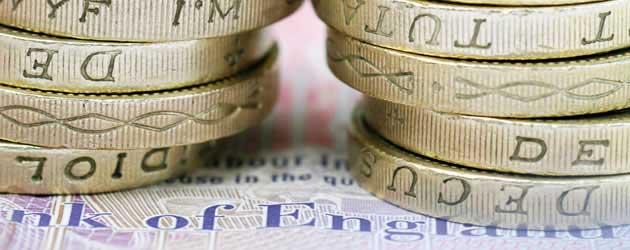
The Pound to US Dollar exchange rate (GBP/USD) plummeted to a fresh 7-week low of 1.5112 yesterday in response to a softening of UK inflation. However, Sterling cawed back around 0.6 cents and rose to 1.5170 during the evening as markets reacted to comments from the Federal Reserve.
GBP/USD nosedived -1.5 cents during the day yesterday as the latest UK Consumer Price Index fell from 2.8% to 2.4% in April. The Bank of England has often cited overshooting inflation as a reason not to embark on further stimulus measures to support the UK economy, because the printing of electronic money is considered inflationary. However, with CPI falling by more-than-expected during April, investors decided that the BoE could be more likely to roll out another round of asset purchases and this weakened the Pound. Phillip Saw of Investec said.
“It is a welcome drop in inflation that should give the MPC more flexibility to restart the asset purchase programme if they want to give more stimulus”.
During the North American session St Louis Fed President James Bullard and New York Fed President William Dudley gave separate talks on monetary policy. Whilst neither Fed official gave a clear sign as to whether the pace of the US Central Bank’s asset purchasing scheme will speed up or slowdown during the next few months, Bullard did lean towards maintaining the current rate of $85 billion a month, which damaged demand for the US Dollar and allowed Sterling to rally by around 0.6 cents.
The St Louis President said that QE is good for financial markets because it gives them confidence to invest and help the economy rebuild. He said that the current low rate of inflation does not warrant a slowdown in asset purchases and asserted that open-ended QE “has a future”. On the other hand Bullard pointed out that over-confidence, leading to bubbles, is a “critical issue” that must be avoided and he postulated that masses of income would be wiped out by a multi-year period of ultra-low interest rates.
New York President William Dudley appeared to position himself, slightly, on the other side of the fence. He said that inflation is unlikely to fall significantly further and mentioned that the Fed is more likely to begin tapering its QE3 scheme in the future than make further additions to it:
“At some point, I expect to see sufficient evidence to make me more confident about the prospect for substantial improvement in the labour market outlook [when that happens] it will be appropriate to reduce the pace”.
The Federal Reserve’s true intentions should become clearer later on today when Chairman Ben Bernanke gives his Testimony on America’s Economic Outlook. Any further inclinations that the Central Bank is looking to wind down its quantitative easing programme in the near future could send Sterling spiraling lower towards significant psychological support levels at 1.5000. However, if Bernanke commits to maintaining the current level of monetary easing for the foreseeable future then GBP/USD could mount a rally back towards 1.5410.

Comments are closed.